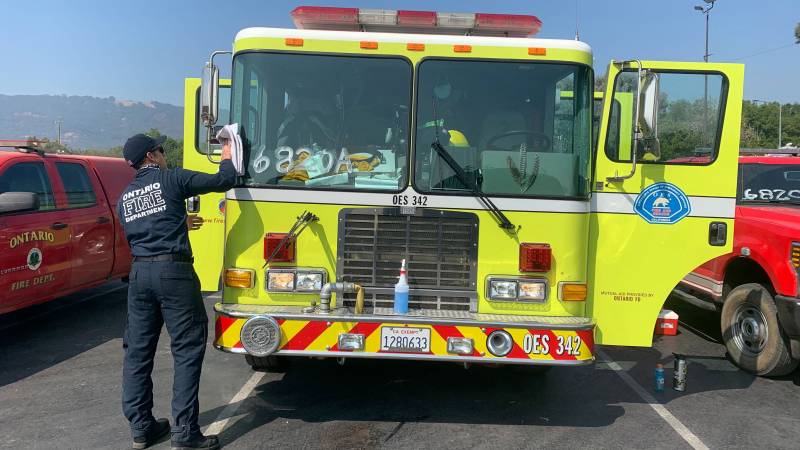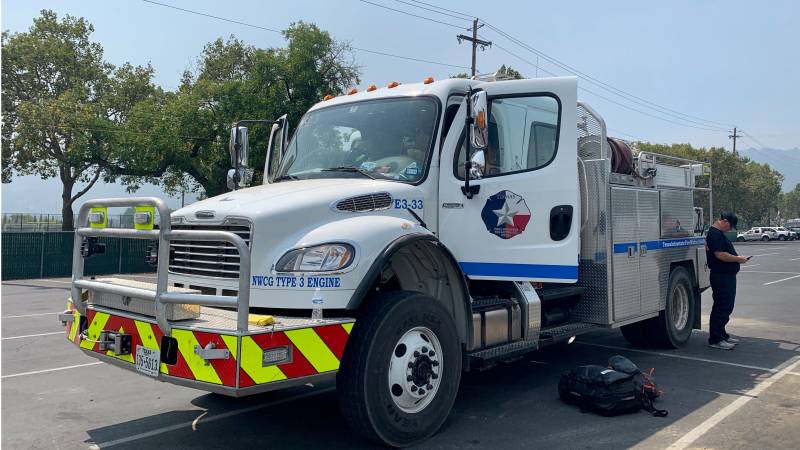More than 1,300 firefighters are currently battling the SCU Lightning Complex fire — a group of fires near east San Jose and Gilroy in what Cal Fire officials are calling the second largest fire in California history. At a press conference Tuesday afternoon at the base camp in Alameda County Fairgrounds, Cal Fire incident commander Jeff Eich called the fire the most complex in his career.
Yet for some local firefighters, the fires this time around are different — they’re hitting closer to home. In some cases, firefighters’ families have had to evacuate and some aren’t sure if their home will still be standing when they return.
Oakland Fire Battalion Chief James Bowron and his 22-person team from Oakland, Berkeley and Alameda Fire Departments, have been battling the SCU Fire Complex since August 16, working 24-hour shifts every other day.
One firefighter on his team owns a home in Santa Cruz close to the CZU Fire Complex and is worried about having to evacuate when she returns.
“It adds another layer when it’s this close to home,” Bowron said. As a supervisor, Bowron said it’s a struggle between keeping up the team’s morale and their focus.

A veteran on the force, Bowron said he knows what he signed up for. “Calm breeds calm, and chaos breeds chaos. So from a leader’s perspective, it’s important to remain calm because I think that keeps everybody else calm,” he said.


